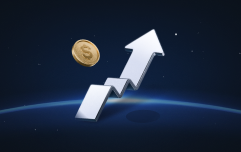Trump bought over $82 million in bonds between late August and early October
Trump is stacking bonds. Between August 28 and October 2, he bought over $82 million worth of corporate and municipal debt, according to financial disclosures published by the U.S. Office of Government Ethics on Saturday.
These forms, required under the 1978 Ethics in Government Act, showed that Trump made more than 175 individual transactions during that five-week period. While the exact figures weren’t listed, the highest possible value of all purchases combined hit $337 million.
Most of the bonds were from states, cities, counties, school districts, and other public bodies with taxpayer ties. Others were from industries that had already seen policy wins during Trump’s administration. The filings showed he went after sectors like banking, technology, and retail; areas that have either already benefited or continue to benefit from his rollback of regulatory rules.
Trump adds tech, retail, and banking bonds to his portfolio
In the corporate space, Trump bought bonds from companies like Meta, Intel, Broadcom, and Qualcomm. He also added debt from CVS Health, Home Depot, and two major Wall Street players; Goldman Sachs and Morgan Stanley.
But one of the more loaded moves came when he bought bonds from JPMorgan in late August. That same week, Trump told the Justice Department to investigate JPMorgan for its ties to Jeffrey Epstein, the financier and convicted sex offender who died in jail in 2019.
JP Morgan, in a statement, said it regretted the prior relationship but denied enabling or helping Epstein carry out “heinous acts.” The decision to buy JP Morgan’s debt while simultaneously calling for a federal investigation raised questions, especially since he’s now the one leading the government again.
The disclosures also showed a purchase of Intel bonds, which followed a move by Trump’s administration to take a government stake in the chipmaker. While the White House didn’t respond to questions over the weekend, it’s been stated previously that Trump’s investments are handled by a third-party financial institution, with neither he nor his family managing day-to-day trades.
Trump’s wealth continues to grow through bonds and crypto
A filing from August had shown that Trump had already dropped more than $100 million into bonds since returning to the Oval in January.
According to the annual disclosure form he submitted in June, he pulled in over $600 million from crypto, golf courses, licensing deals, and other ventures.
Though Trump has said before that he put his companies in a trust controlled by his children, the disclosure showed that profits still eventually land in his own accounts. That detail raised fresh concerns about conflicts of interest, especially now that he’s back in the Oval Office and shaping economic policy.
The June report put his total assets at no less than $1.6 billion, based on calculations published by Reuters. Between the bond purchases, crypto gains, and his continued hold on multiple business interests, Trump appears to be expanding his financial footprint while running the country.
Join a premium crypto trading community free for 30 days - normally $100/mo.
You May Also Like

Big U.S. banks cut prime rate to 7.25% after Fed’s interest rate cut

Coinbase Joins Ethereum Foundation to Back Open Intents Framework
